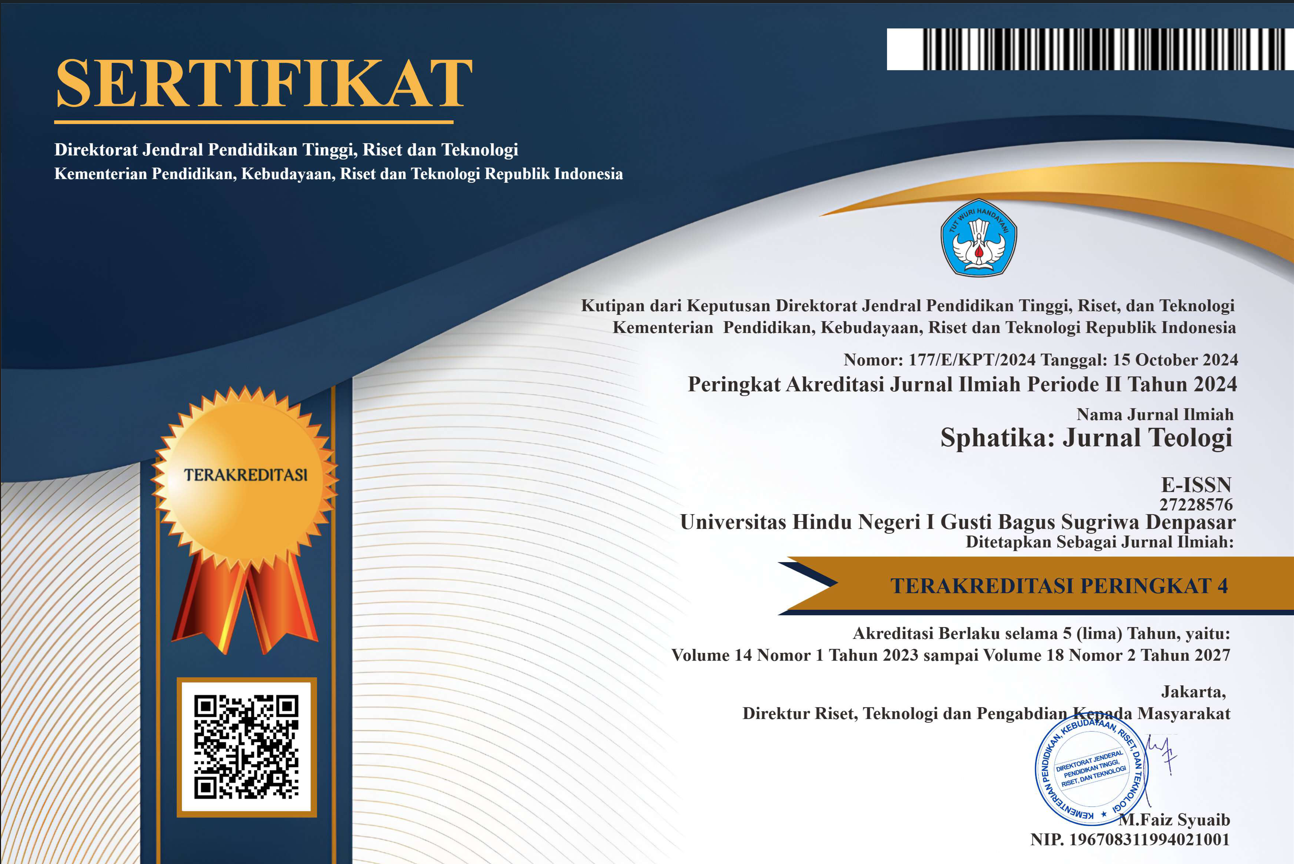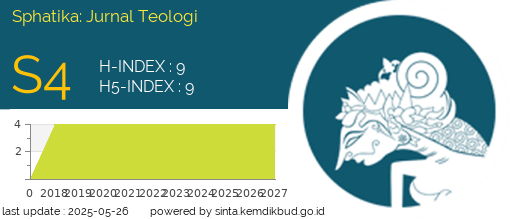Konsep Monotheisme dalam Bhagavad Gītā
DOI:
https://doi.org/10.25078/sphatika.v13i1.1123Keywords:
Bhagavad Gītā; monotheism; sad darsanaAbstract
Sad Darsana are six Indian philosophical systems that are used in the rational logic of human thought to understand the duality of the elements of the universe, the world, and humans. so that dynamic realization occurs independent dualism that stands alone in the absence of interconnection of relations "the principle of consciousness is the true soul and the principle of materiality is the static element of matter and the unity of the two is the stage of human understanding of the entity and the eternality of matter. Eternity evidence of the pluralistic existence of the human soul in Jagadraya is essentially the same, the difference in existence from it is the compensation of life itself for the entity and the eternity of its substance. Excuses in their various forms are real maya, when the senses are shackled by the atomistic operations of objects outside of themselves that cause attachment and desire to dominate life itself, it is possible for God to descend into the world taking various forms of Avatar manifestations.
References
Ciptoprawiro, A. (1991). Filsafat Jawa Pengejawantahan Filsafat Dalam Adat Budaya Jawa. UI.
Kajeng, I. N. dkk. (1999). Sārasamuccaya dengan Teks Bahasa Sanskerta dan Jawa Kuna. Pāramita.
Maswinara, I. W. (2006). Sistem Filsafat Hindu Sarva Darsana Samgraha. Pāramita.
Meringer, W. A. (1999). Menjadi Pribadi Utuh. Kanisius
Pudja, G. (2013). Bhagavadgītā (Pañcama Veda). Pāramita.
Radhakrishnan, S. (2003). Agama-Agama Timur dan Pemikiran Barat. Program Magister Ilmu Agama dan Kebudayaan Universitas Hindu Indonesia.
Suamba, I. B. P. (2003). Dasar-dasar Filsafat India. Widya Dharma.
Subramaniam, K. (2003). Mahabharata. Pāramita.
Subramaniam, K. (2006). Ramayana. Pāramita.
Tim Penyusun. (2002). Siwa Tattwa. Pemerintah Provinsi Bali.
Titib, I. M. (1996). Veda Sabda Suci Pedoman Praktis Kehidupan. Pāramita.
















